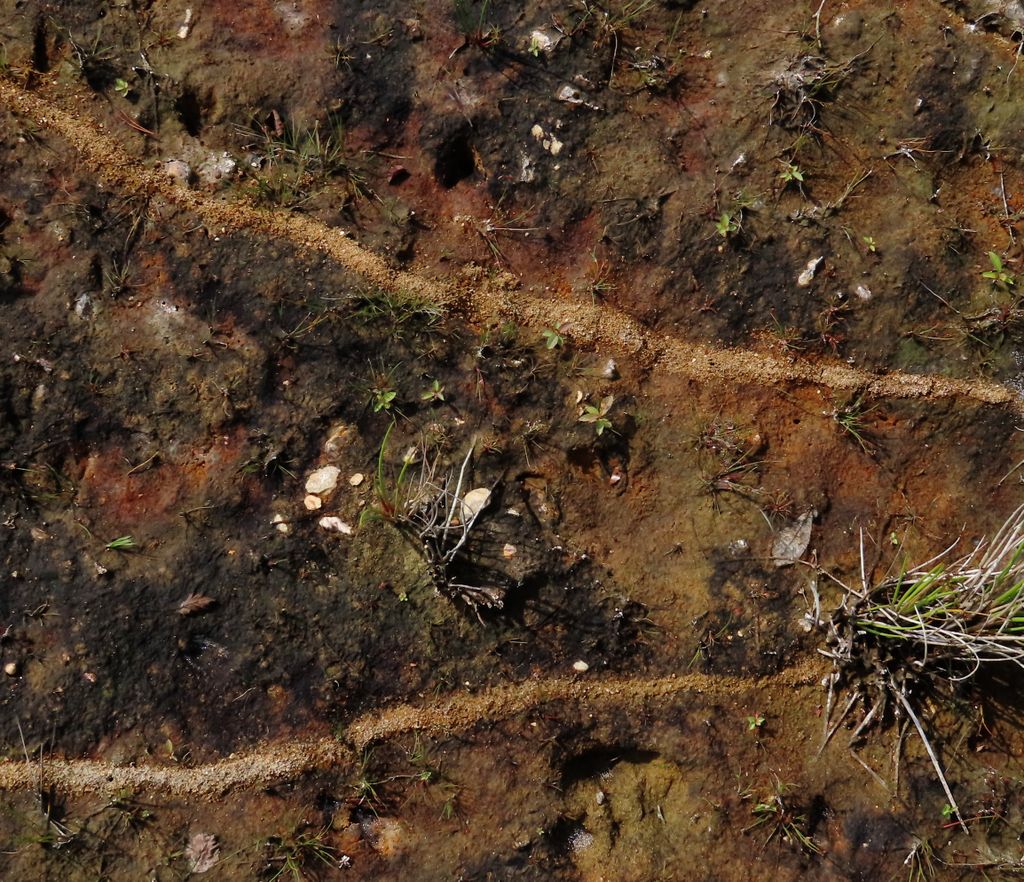Alan Holmes led a well-attended dragonfly walk at 50 Acre Piece near Padworth Common on the morning of Saturday 17 August. The sun was shining, but there was a cool breeze, so many of the dragonflies were perching rather than flying, which gave members more time to locate and inspect them. The heathland site is an area of former gravel extraction with a number of large shallow pools. There are no obvious tracks across the site and so far, it has escaped the notice of the dog walkers. As a result, the water is clear and not stirred up. Members parked on the verge at the side of Silver Lane, then crossed Burghfield Road to enter 50 Acre Piece at its north-west corner. One of the early sightings was a Grayling butterfly, the first of a total of 14 which were counted during the morning. A male Emperor Dragonfly was patrolling round the first pond. It is a large dragonfly with a green thorax and blue abdomen. A specimen was photographed down on the ground on a large pale stone. A male Black-tailed Skimmer had a blue abdomen with a black tip. An Emerald Damselfly was perching on poolside vegetation with its wings held half open, while perching nearby was a male Common Darter, with a red abdomen. A female Emperor Dragonfly was ovipositing in floating vegetation out in the open water of the pond. One of the morning’s targets was our smallest true dragonfly, the Black Darter. This is a species which is declining nationally, but which appears to be bucking the trend and doing well at 50 Acre Piece. A male Black Darter was perching on bankside vegetation and had black wing spots, completely black lags and yellow stripes on the abdomen. A Scarce Blue-tailed Damselfly was another target species and one was captured in a photograph while perching on bankside vegetation. For male Scarce Blue-tailed Damselflies, all of segment 9 is blue, but only part of segment 8 is blue. For the male of the more common Blue-tailed Damselfly, all of section 8 is blue and all of section 9 is black. (Segment 1 of the abdomen is closest to the thorax, while segment 9 is furthest away from the thorax.) A female Emerald Damselfly had a thicker abdomen than the male. A mating pair of Small Red Damselflies was seen. This species is restricted to mires, heathland and bogs in southern England and Wales. It has red eyes and legs. A Brown Hawker was being chased off by an Emperor.
The site has four main pools, connected by a network of channels. The route led southwards along the western edge of the pools, then back along the eastern side. A Buzzard family drifted overhead and the call of a Raven was heard. One member who sat quietly on a log was rewarded with the sight of a swimming Grass Snake which was about 2 feet long. Strange underground trails were outlined by lines and junctions of yellowish sand. They were thought to have been made by the ant Tapinoma erraticum. All three types of heather were seen – Cross-leaved Heath, Bell Heather and Heather Calluna vulgaris. Other plants seen included Water Purslane, Floating Clubrush, Creeping Willow with the gall Rabdophaga salicis and Heath Groundsel. A young toadlet was seen and a Lizard scuttled away into the surrounding vegetation. Towards the end of the walk, a Kite-tailed Robber-fly Tolmerus atricapillus landed on one of the walkers.






Pictures by Rob Stallard and Alan Holmes
